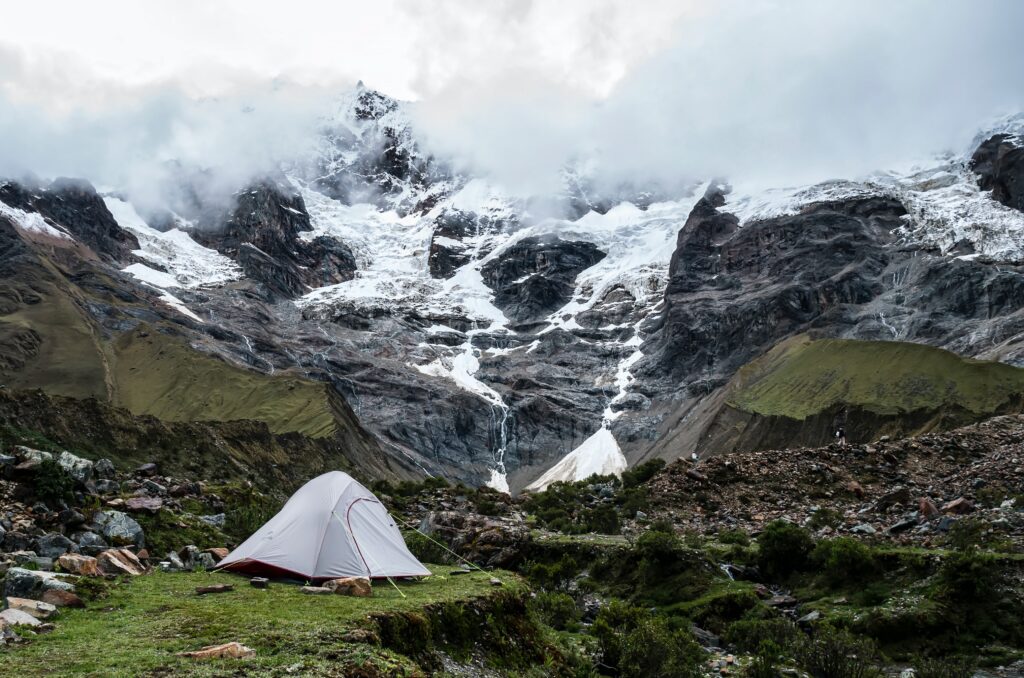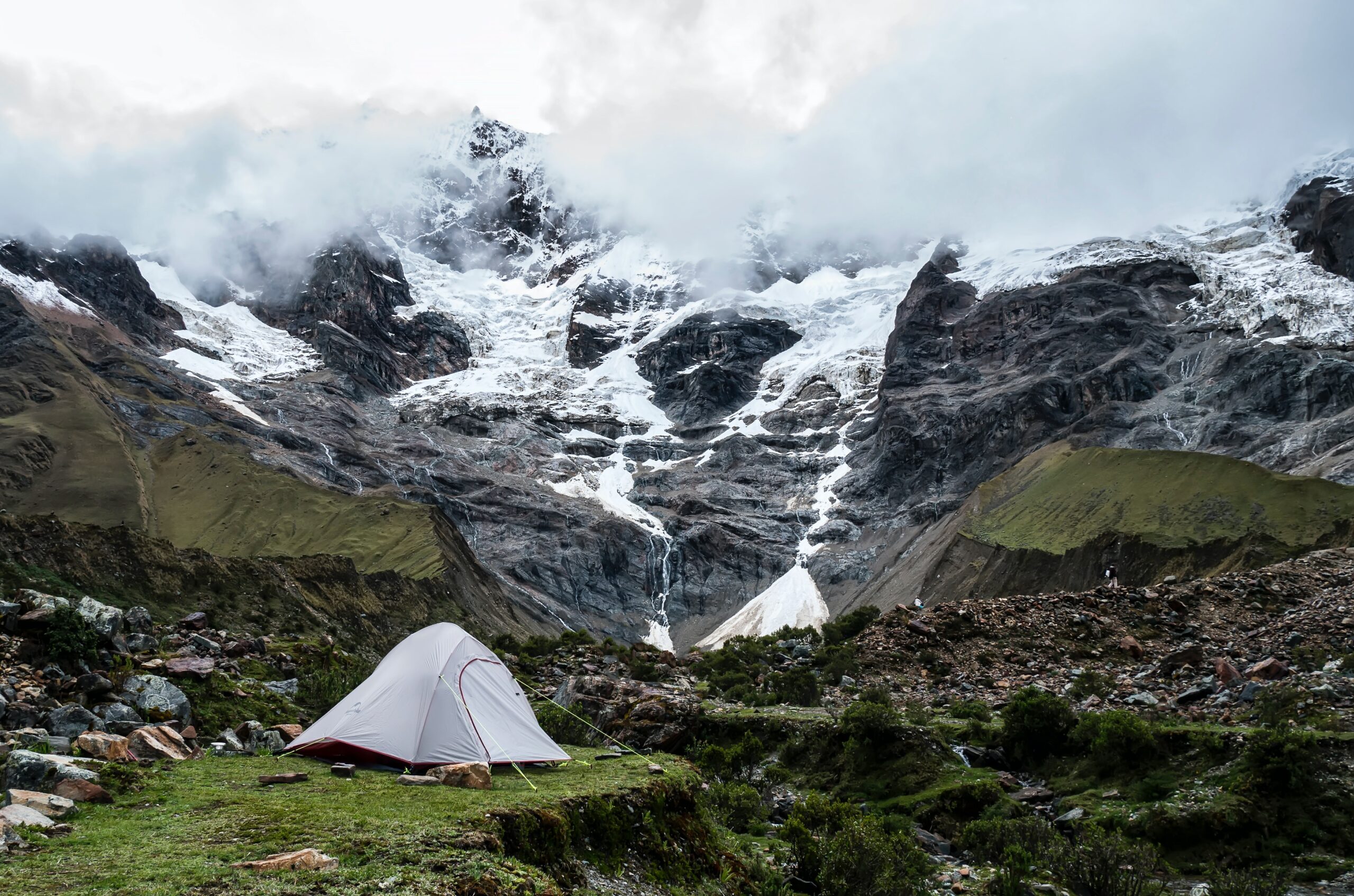Although camping in the cold will allow you to capture the most scenic views, you’ll just end up being miserable if you do not know how to battle with the cold. The freezing temperature will ruin even the most picturesque sites. You might get away with the basic camping gear on a summer or spring camping trip, but camping in the cold requires a little more thought and effort.
Whether you’re backpacking solo or with friends in the snowy mountains, or you’re cross-country skiing, camping in the cold should be planned out in advance so you don’t forget to bring all the necessary gear to get through the colder days and even colder nights.

How to Stay Warm When Camping in the Cold
Low temperatures will turn your camping trip extremely unpleasant if you do not take the right measures to stay warm. From bundling up your toes and hands to adding extra layers on your body, camping in the cold require much more planning and effort than doing so during warmer climate.
Plus, do not forget to cover your head with a thick beanie or a winter hat as it will eliminate the chances of frostbite and prevent hypothermia. Keeping the head warm is crucial because the body disperses heat from the head.
To stay dry when camping in the cold, you should wear a lightweight, waterproof jacket, water-repellent trousers, and keep plenty of extra socks which you can change as soon as your feet start sweating.
Tips for Staying Warm in the Coldest Temperatures
- Add an extra layer of clothing as soon as the temperature drops
- Put a hot water bottle inside your sleeping bag to keep yourself warm
- Wear a beanie to bed even if you don’t feel too cold when you’re about to sleep. It will protect you from extremely low temperatures throughout the night.
- Carry disposable heat pads for nights when the temperature gets unbearable
- Adding a blanket underneath the sleeping bag will help you stay warm for a longer time
- Do a few jumping jacks to warm up your body before you get into your sleeping bag
- Your tent needs to be well ventilated throughout the night so that the possibility of condensation is reduced
- It might seem counter-intuitive, but high-calorie intake is important to keep you warm so try eating lots of protein, fat, and complex carbohydrates; eggs, nuts, cheese, porridge, and wholegrain pasta are great options to fill up your stomach and keep you warm as well
List of Useful Warm Camping Gear
- Tent
- For camping in the cold, you need an all-season tent which is constructed to withstand heavy snow and strong winds. These tents have full nylon inner lining so the maximum amount of heat is preserved as long as the tent is closed.
- As it gets dark pretty soon during the colder months, you’ll most likely spend more time inside the tent. Therefore, it’s suggested to opt for a tent which is big enough to fit more than the total number of people at the camp.
- That is, if you and two of your friends are camping, try to bring a tent that fits four people easily. That way you’ll have enough space to move around a bit and you won’t feel claustrophobic by being stuck in a small enclosed space.
- However, if your priority is to just stay warm, then go for a moderately sized tent as there won’t be any extra space for excess air and increased condensation.
- Thermal Clothes
- To obtain the maximum insulation, it’s important to layer up in multiple clothes especially thermal ones. You must start from the base with thermal innerwear. As for clothing, opt for preferably a light fleece material so that sweat doesn’t accumulate through long hours of wear. Merino wool and wool-fleece are great affordable options for the ones who prefer natural fibers.
- Pack them all with a lightweight waterproof jacket. Do not forget your hands. Protect them with the warmest thermal gloves you can find. Also, you should put on a thick scarf around your neck.
- Keep in mind that warm feet will get you a long way especially if you’re planning to hike in the cold. While camping in the cold, cotton socks will do you no help. Instead, wear a pair of woolen or polyester socks that are designed for hiking. If you are willing to spend a bit more on socks, try synthetic-blend socks that feature odor management and moisture reduction.
- Boots
- If you’re camping in the cold and you are prone to be in snowy areas, waterproof boots are a must! The boots you wear do not have to be expensive but make sure that they are of moderately high quality and possess the water-repellent feature.
- Heater
- No matter how many layers of clothes you wear, camping in the cold is still quite challenging. This is because your body is not used to being in the outdoors at really low temperatures unless you’re an adventure junkie and you’re used to being in the wilderness for days at a time.
- However, if you’re new to the camping scene, a heater will be your beneficial companion. Although it might be burdensome to carry, it’ll be worth it during the nights when the temperate fall drastically.
- You can choose an electric heater, a gas heater, or a halogen heater, depending on what you already have at home. While any heater will provide you the warmth you need, you should be extremely careful operating it. Chances of gas leak and fire are quite high, but as long as you keep the auto-shutoff button turned on, you should be good to go.
- Sleeping Bag
- A high-quality sleeping bag is an essential gear for camping in the cold. When purchasing a sleeping bag, look at the limit and extreme temperature rating, as well as the comfort level. The lower limit refers to the temperature in which you can sleep comfortably, while the extreme refers to the temperature in which you can survive for 6 hours in the sleeping bag. However, this is not to be relied on, as it can lead to hypothermia.
- Lights
- Winters have shorter days therefore camping in the cold will be faced with longer nights. You should have multiple sources of lights with you if you’re planning to camp out in the middle of nowhere.
- If you have enough space in your vehicle to fit larger gear, then you should bring one or two lanterns as well (depending on how many people you’re camping with). This should provide you enough light even in the darkest nights under the stars. However, if you have limited carrying space, throw in multiple torches because you’ll need them to look for logs or survival items around the woods or mountains.
- Plus, you should also carry a box or two of matches (waterproof box of course!). This will aid in building fire as soon as you can gather a few logs and twigs from the surrounding areas.
Conclusion
Camping in the cold has its perks. There’s nothing like waking up in the morning in the middle of the snowy mountains or chilly forests to enjoy the spectacular view with a cup of a warm drink in your hand. Plus, with the right warm camping gear, you can experience a great combination of adventure and comfort in the outdoors.
References:
- https://www.backpacker.com/skills/cold-weather-camping-sleep-better-than-a-hibernating-bear
- https://weleaf.nl/en/camp-in-extreme-cold/
- https://www.popularmechanics.com/adventure/outdoors/a29006038/cold-weather-camping/
- https://www.campingintheforest.co.uk/blog/seasonal-camping/cold-weather-camping-camping-equipment-essentials-and-tips

